Potrebujeme váš súhlas na využitie jednotlivých dát, aby sa vám okrem iného mohli ukazovať informácie týkajúce sa vašich záujmov. Súhlas udelíte kliknutím na tlačidlo „OK“.
ASTM D7225-13
Standard Guide for Blood Cleaning Efficiency of Detergents and Washer-Disinfectors
Automaticky preložený názov:
Štandardné príručka pre Blood účinnosť čistenia pracích a umývacích a dezinfekčných
NORMA vydaná dňa 1.6.2013
Informácie o norme:
Označenie normy: ASTM D7225-13
Poznámka: NEPLATNÁ
Dátum vydania normy: 1.6.2013
Kód tovaru: NS-37922
Počet strán: 3
Približná hmotnosť: 9 g (0.02 libier)
Krajina: Americká technická norma
Kategória: Technické normy ASTM
Kategórie - podobné normy:
Anotácia textu normy ASTM D7225-13 :
Keywords:
blood cleaning efficiency, detergents, washer-disinfectors, ICS Number Code 11.100.30 (Analysis of blood and urine)
Doplňujúce informácie
| Significance and Use | ||||||||||||
|
4.1 Significance—Dried blood represents a significant challenge to cleaning surgical instruments. The water-soluble components of blood are easily rendered insoluble when exposed to heat, chemical solutions, or time at room temperature. The water insoluble component of blood is fibrin built up during coagulation. These proteins bind quite readily to the surfaces of surgical instruments making them difficult to remove even with the aid of chemical cleaning agents. Instruments contaminated with blood residue after reprocessing represent a significant threat for infection to healthcare workers and patients. Healthcare facilities typically employ the use of automated instrument washers. These devices combine mechanical action along with chemical cleaning agents in a staged cleaning cycle designed to thoroughly clean surgical instruments. To function properly, these machines must be performing at targeted mechanical efficiency and deliver the correct chemical cleaning agents at the correct temperature, at the correct dosage for the correct period of time. Manufacturers of automated washers and manufacturers of cleaning detergent need to evaluate the performance of their products utilizing a surrogate for surgical instruments soiled with blood. The results of the performance testing will be used to improve product design and for validation of the performance of their product for various regulatory requirements. 4.2 Use—The regular, periodic use of the blood soil test is a systemic challenge to the functioning of an automated washer. To properly challenge the cleaning device, the test must be analogous to the dried blood soil, to the stainless steel substrate, and to the physical barriers presented by surgical instruments. These physical barriers include the box lock, or pivot joint of a hinged instrument, the serrated tips, and crevices of surgical instruments. On the test coupon, the components of blood are similar to the state of dried blood on instruments. By utilizing a grooved stainless steel coupon, the substrate is similar to that of stainless steel instruments. By mounting the soiled coupon in a plastic holder the physical barriers represented by cracks and crevices of instruments (for example, box locks) are represented. Users are provided with an interpretation guide that aids them in interpreting results that are less than optimal. For instance, failure to remove the fibrin layer of blood soil (which is water insoluble) indicates a problem with the chemical cleaning agent(s). Failure to evenly remove a hemoglobin soil indicates a mechanical failure. Failure to remove any soil indicates either a catastrophic mechanical failure, or inappropriate settings for the initial rinse stage. As a standardized challenge, the test provides a reproducible means for the washer manufacturer and the detergent manufacturer to compare new designs and formulations to those existing within their own product line as well as those of others in the market. For the purpose of submitting their instructions for use, the test provides a means to validate the performance of their product with a device that is a surrogate for the devices their products will be used to clean in the practical setting. This validation testing can be used as part of any necessary documentation for regulatory filings and records. |
||||||||||||
| 1. Scope | ||||||||||||
|
1.1 This guide is based on a standardized test soil correlating to coagulated blood suitable for screening tests and the evaluation of the cleaning efficiency of washer-disinfectors used for reprocessing of surgical instruments. This guide strictly deals with cleaning and does not describe any methods that are related to disinfection. See the Referenced Documents D5343, D4008, D4265, D4488, D2960, D3050, in Section 1.2 The values stated in SI units are to be regarded as standard. No other units of measurement are included in this standard. 1.3 This standard does not purport to address all of the safety concerns, if any, associated with its use. It is the responsibility of the user of this standard to establish appropriate safety and health practices and to determine the applicability of regulatory limitations prior to use. |
||||||||||||
| 2. Referenced Documents | ||||||||||||
|
Podobné normy:
Historická
1.9.2011
Historická
1.12.2011
Historická
1.11.2013
Historická
1.6.2010
Historická
15.2.2013
Odporúčame:
Aktualizácia zákonov
Chcete mať istotu o platnosti využívaných predpisov?
Ponúkame Vám riešenie, aby ste mohli používať stále platné (aktuálne) legislatívne predpisy
Chcete vedieť viac informácií ? Pozrite sa na túto stránku.


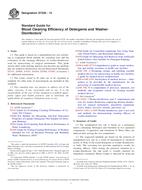
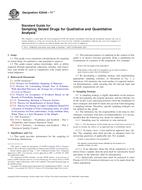 ASTM E2548-11e1
ASTM E2548-11e1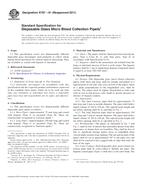 ASTM E787-81(2011)..
ASTM E787-81(2011)..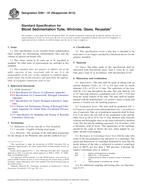 ASTM E961-97(2013)..
ASTM E961-97(2013)..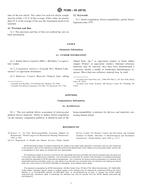 ASTM F2382-04(2010)..
ASTM F2382-04(2010)..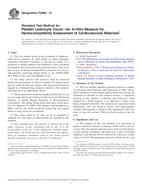 ASTM F2888-13
ASTM F2888-13
 Cookies
Cookies
